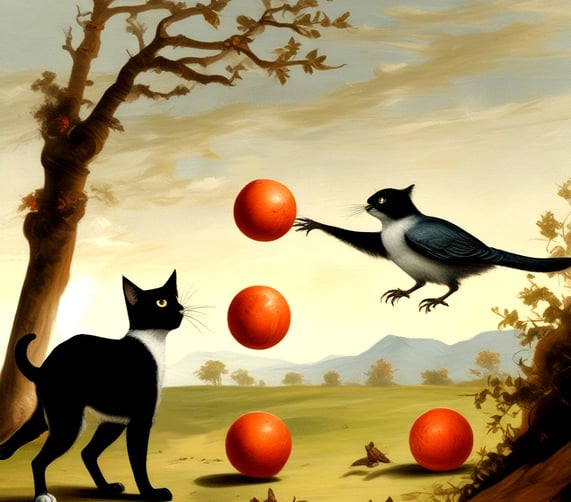The Bird Flu Outbreak in NYC: What It Means for Cat Owners
With bird flu cases rising in New York City, cat owners need to take extra precautions. Learn how the virus spreads, what risks it poses to your pets, and how to keep your cat safe during the outbreak. So, let’s break it down—what this means for your cat, what the risks are, and what you should do next.
BIRD FLU OUTBREAK AND CATS
3/16/20253 min read


When I first saw the New York Times headline about pet cats in NYC testing positive for avian influenza (H5N1), my heart sank. Bird flu in domestic cats? That’s not something we hear about every day. And if there’s one thing we’ve learned from past outbreaks, it’s that early awareness and precautionary measures can make all the difference.
The Bird Flu Outbreak in NYC: What It Means for Cat Owners
When I first saw the New York Times headline about pet cats in NYC testing positive for avian influenza (H5N1), my heart sank. Bird flu in domestic cats? That’s not something we hear about every day. And if there’s one thing we’ve learned from past outbreaks, it’s that early awareness and precautionary measures can make all the difference.
So, let’s break it down—what this means for your cat, what the risks are, and what you should do next.
What’s Happening?
According to a March 2025 report from the New York Times, pet cats in New York City have tested positive for avian influenza (H5N1), commonly known as bird flu. This highly pathogenic virus has been spreading among wild birds, poultry farms, and even some mammals, but the jump to indoor domestic cats has raised serious concerns.
The details are still emerging, but here’s what we know so far:
🐦 Bird flu is primarily spread through infected wild birds and contaminated environments.
🐱 Cats are likely getting infected by eating raw meat (especially wild birds) or exposure to contaminated surfaces.
🏥 Several cases of feline infection have been reported, but it’s unclear how widespread the risk is.
The most alarming part? The virus has caused severe illness in infected cats—including respiratory distress, neurological symptoms, and, in some cases, death.
How Could Cats Get Bird Flu?
Most cat owners aren’t feeding their pets raw pigeon or handling sick chickens—but the virus is more insidious than that. Here’s how exposure could happen:
🔹 Raw Meat Diets – If raw poultry, game birds, or wild-caught meats are contaminated with H5N1, feeding them to your cat could introduce the virus.
🔹 Outdoor Exposure – Outdoor or free-roaming cats may hunt infected birds or come into contact with contaminated droppings.
🔹 Human Transmission – While unlikely, humans can carry viral particles on shoes, hands, or clothing after visiting infected areas (parks, farms, or even handling poultry from grocery stores).
🚨 If you feed your cat raw food, now is the time to be extra cautious.
Should You Stop Feeding Raw?
As a long-time raw feeder, I never thought I’d be saying this—but right now, I strongly recommend cooking all raw meats before feeding them to your cat.
🔥 Here’s What I’m Doing Instead:
✔ Lightly cooking raw meat to neutralize potential pathogens while preserving as much nutritional value as possible.
✔ Avoiding raw poultry altogether until more research confirms the safety of commercial raw brands.
✔ Staying updated on the latest outbreak reports and watching for symptoms in my own cats.
Does this mean raw feeding is dead? No. But for now, it’s about risk management—especially when we don’t have all the answers yet.
Signs of Bird Flu in Cats
If you’re in NYC (or anywhere experiencing an outbreak), monitor your cat closely for these symptoms:
⚠ Early Symptoms:
🔹 Lethargy, fever, and decreased appetite
🔹 Watery or red eyes
🔹 Nasal discharge or sneezing
⚠ Severe Symptoms:
🔹 Difficulty breathing
🔹 Seizures or neurological issues
🔹 Sudden collapse or death
🚨 If your cat shows any of these signs, contact your vet immediately.
Precautionary Steps for Cat Owners
🔹 Switch to cooked diets temporarily – Light cooking kills viruses while keeping meals nutritious.
🔹 Keep cats indoors – If they roam outside, they could encounter infected birds.
🔹 Practice good hygiene – Wash hands thoroughly after handling raw meats or outdoor surfaces.
🔹 Monitor news & updates – Follow local reports for any new outbreak developments.
Final Thoughts: What’s Next for Raw Feeding?
This outbreak is a wake-up call for raw feeders and cat owners alike. While I firmly believe in the benefits of raw diets, this situation highlights the importance of adapting to new risks.
🔹 I’ll be watching this outbreak closely and updating my readers as we learn more.
🔹 I’ll also be working on a guide for safe home-cooked diets that retain as many raw benefits as possible while eliminating pathogen risks.
🔹 In the meantime, caution is key—don’t panic, but take precautions to protect your cat.
Because at the end of the day, our cats rely on us to make the safest choices for them. 🐾
